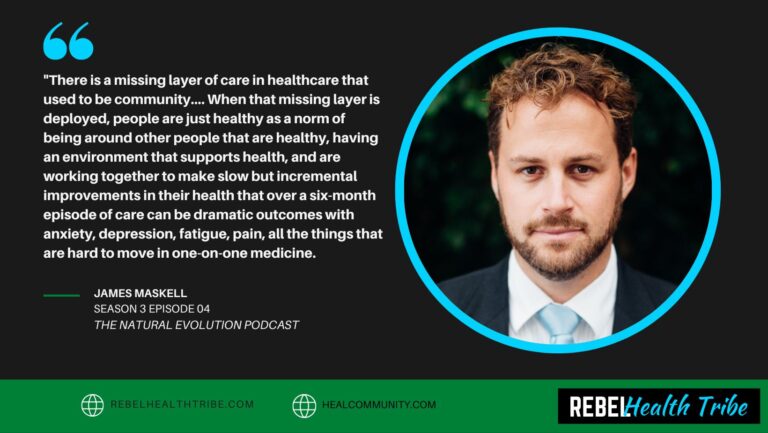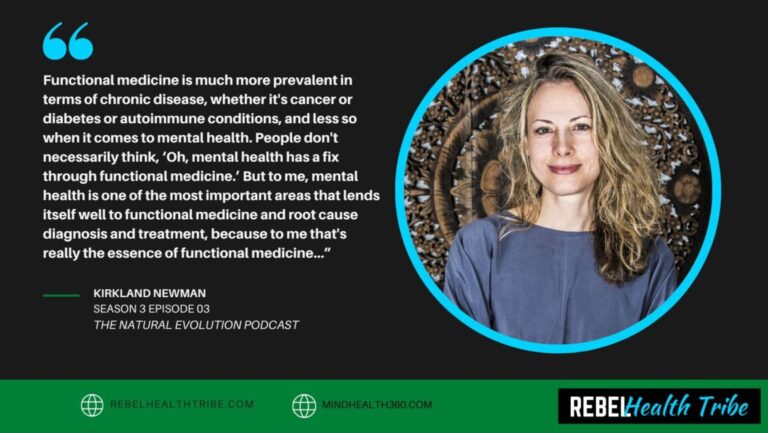
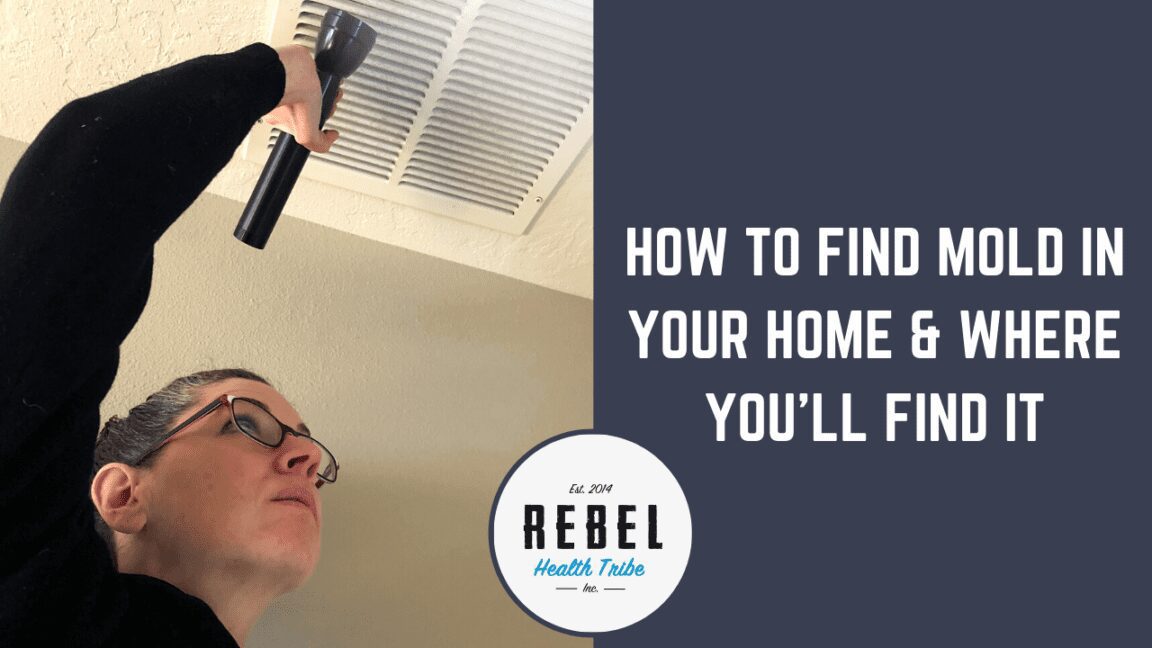
More Posts from
Toxicity & Detox Support
Sign Up & Receive the So You Think You Have Mold, Now What? PDF
Sign up with your name & email to receive the So You Think You Have Mold, Now What? PDF along with any future updates, content, and mold-related offers from RHT & Cathy Cooke!
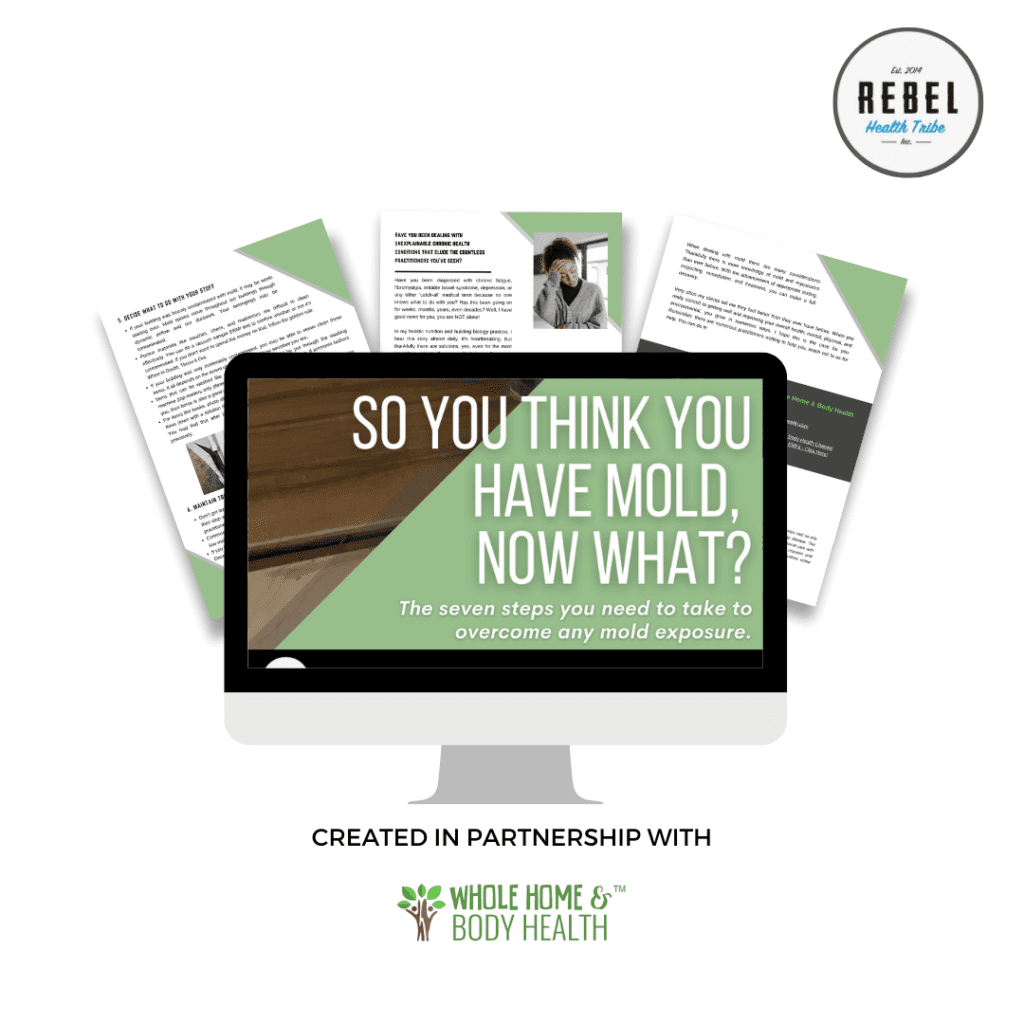
‘If you go looking for mold in a house, you’ll find it’.
This statement was relayed to me by a client who was looking at buying a home with obvious water damage. It was the home inspector that told her this. What he was really saying was this: “all buildings experience water damage, it’s normal, it’s no big deal. This water damage you see is not a problem.”
That sentiment was in fact, shared with my client by two additional inspectors. I was stunned, though I shouldn’t have been. To my eyes, I could see numerous signs of water damage throughout the structure which indicated an assurance of mold. The traditional building inspectors and contractors see this all time, so to their eyes, ‘it’s no big deal, it’s normal.’
That’s like an oncologist saying, ‘I see cancer all the time, it’s normal, it’s no big deal.’ We know that’s crazy. The problem is that the mainstream has yet to acknowledge that mold exposure can create significant health problems. Therefore, most contractors, building inspectors, and even mold inspectors don’t consider the presence of mold to be too much of a concern. For this reason, many people in the profession overlook obvious signs of water damage or frankly, just don’t do a thorough inspection. This is clearly a problem.
If you are experiencing health problems, and you think they may be mold related, you need someone to find the sources inside your home… it’s estimated that 60-80% of homes in the US have mold.
Cathy Cook, BBEC, EMRS
I can’t tell you how many times I’ve been in a client’s home where a previous inspector has visited and claimed, ‘no mold here’, yet I find numerous sources.
To be fair, finding hidden mold is very difficult. The best mold inspectors in the world have missed significant issues. This is why I want more homeowners to understand how mold works, and how to identify the signs. The people that live in the building are the best people to find the problems! You know your home intimately and see it every day from numerous angles. I want to give you an introduction on how to identify the signs of a potential mold problem.
First, let’s take a moment to understand why mold happens so you’ll understand how to find it.
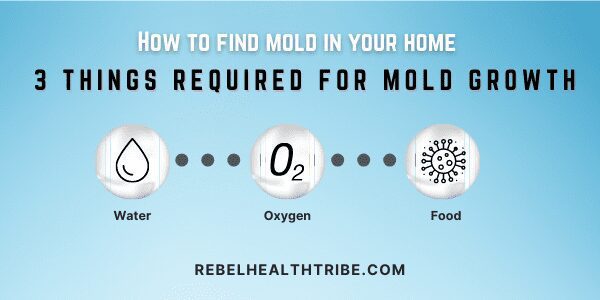
Mold needs three things to grow:
- Oxygen
- Water
- Food
Some people may say it needs heat and darkness as well, but different species vary greatly in their ability to survive different temperatures and levels of light. Without oxygen, water, and food however, there is no chance.
Now if you’re like me, then you probably live on planet Earth. Here on Earth, there is loads of oxygen, pretty much everywhere. There is also plenty of mold food. Mold’s favorite cuisines include most anything organic. Specifically, it likes meat, fruit, vegetables, grains, cellulose, dust, and it LOVES predigested cellulose like paper and insulation. And finally, it must have water to thrive. We find water in countless places on earth as well, though California may soon be an exception.
In nature, we rarely find toxic, pathogenic mold problems because sunlight can kill mold spores as well as dry up the water. Thanks to modern building practices however, our houses are nearly perfect environments for mold growth.
- We build on top of dark, damp, crawl spaces full of dust and debris
- We wrap our homes with plastic, creating a vapor barrier that often traps moisture
- We run our duct work in attics or crawl spaces that are unconditioned, allowing condensation to build up
- We keep our homes shut tight 365 days a year without any ventilation
- We force conditioned air through duct work that is rarely if ever cleaned, blowing dust, debris, bacteria, and mold spores throughout the entire home
- And finally, we run plumbing through our walls which is usually inaccessible.
No wonder it’s estimated that 60-80% of homes in the US have mold. I tend to think it’s toward the latter side of that range. So now that you know how mold works, let’s talk about how to find it inside your own home. (These same principles can be applied to anywhere you spend a lot of time. Don’t forget to check your car, office, vacation home, cabin, family member’s homes, doghouse, etc.)
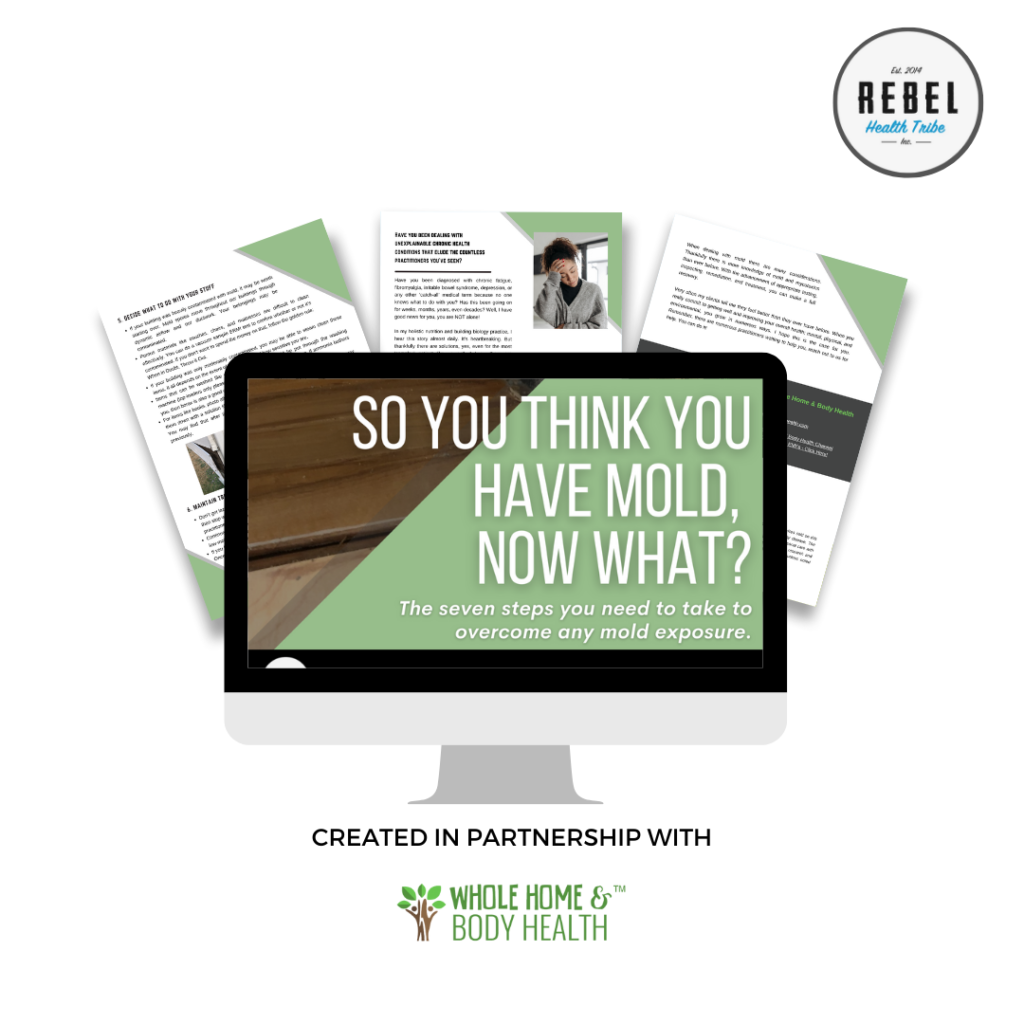
Sign Up & Receive the So You Think You Have Mold, Now What? PDF
Sign up with your name & email to receive the So You Think You Have Mold, Now What? PDF along with any future updates, content, and mold-related offers from RHT and Cathy Cooke!
The most common places that we find mold in buildings include:
- Under sinks
- In the crawl space
- In the attic
- Behind or underneath shower walls/floors
- Behind toilets
- Behind washing machines
- Behind dishwashers
- In wall cavity’s
- Under flat roof’s
- In carpets/under carpets
What do these places have in common?
They’re mostly hidden, thus they’re out of site. If there is a water intrusion in any of these places, we generally don’t know, because we don’t look there. That means that a slow drip, condensation, or a small penetration in the building envelope can produce water in these dark spaces for days, weeks or even years. I have seen mold damage in homes that I’m certain was there for decades. Imagine living in a home for this long and breathing in those spores on a daily basis. Thankfully, we are smart people, and we can look for the signs of water ourselves.
The main signs that water has penetrated your building include:
- Bubbling
- Staining
- Warping
- Buckling and Separating
- Cracking and Peeling
- Rust and Efflorescence
- Visible Mold Growth
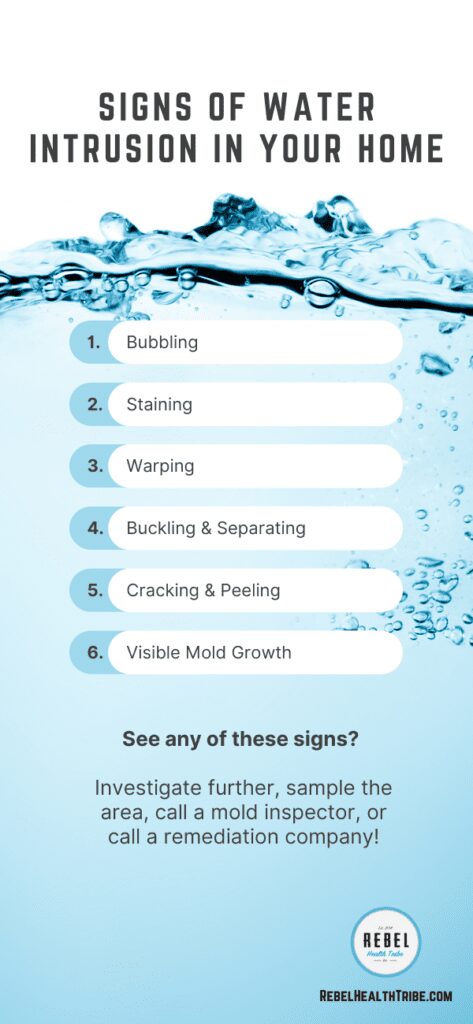
Evaluating Your Situation: Do you have a toxic mold problem?
If you see any of the main signs anywhere in your home, you either need to investigate further, sample it, call a mold inspector, or call a remediation company. But how do you find it in these hidden spaces you ask? Well, you have to look! You don’t need some fancy equipment; you just need your eyes and good flashlight. A moisture meter and infrared camera can be helpful, but they’re not essential. There are 13 Simple Steps you can take right away to determine if your home has mold. Let’s talk about some simple steps you can do right away.

REMINDER: You should always wear appropriate personal protective gear whenever doing this type of investigation. I recommend a respirator, gloves, safety glasses, a Tyvek suit, and booties.
1. Look Under Your Sinks
Every month you should take out everything from underneath your sinks and check for water. If there are signs of moisture, you need to act. If you don’t see active signs of water, take you flashlight and look at all the surfaces, turn it this way and that, perpendicular and parallel to all the surfaces and look for signs of bubbling or an uneven texture. If that exists, there may have been previous water damage that created mold behind the surface. That needs further investigation.
If no signs of water are present, great! I suggest investing in a sink mat like this to capture any water in the future and prevent microbial growth.
2. Look Closely Around All Your Windows
Windows are penetration points to the outside. If they’re not installed properly, they allow water in. This can be hard to see, but there are some tell-tail signs: bubbling paint, water streaking, peeling paint, soft and pliable building materials, dark water stains or visible mold. If you see any of these signs, you need to investigate further and call a professional.
3. Look Closely Around the Outside Perimeter of Your Home
Check for good drainage away from your foundation. Make sure there is no foliage within three feet of the structure. You want to water your plants, not your house. Look for any failing siding, cracks, or penetrations.
4. Check Your Roof
If your roof is too steep or you just don’t want to get up there, then hire a professional, or make you husband do it (just kidding). You want to inspect your roof about twice a year for any missing shingles, visible nails, loose coverings, loose or cracked boots, disturbed flashing, or any penetration points.
5. Look Inside Your Air Handler
If you can unscrew the cover of your air handler, you can look inside, especially at the coils and see if there is a dust or mold accumulation. *If you do not know how to do this, do not try, hire a professional!
6. Use Your Nose (or someone else’s)
Do you smell something musty? Then stop what you’re doing and call an inspector. If you can smell something musty then mold is likely growing. If it’s not obvious where it’s coming from, you need a professional to help you find it.
7. Look Under Carpets
Do you have pets that pee on carpets? Or kids? Or perhaps the adults? Or did the previous owners? If you do, or you’re not sure, you can pull up the carpets from the corners with a pair of plyers. Look for visible staining and rusty tack strips.
8. Look at Baseboards
Remove them if needed. Do the baseboards have uneven surfaces or any kind of bubbling or warping? Especially around sinks, bathtubs, and showers? If so, you may want to remove them and take a closer look.
9. Check Your Grout
Is the grout in your kitchen, bathroom, or anywhere you have masonry, stained or discolored? If it is, and it returns after cleaning, then you want to investigate further.
10. Look Behind the Washer and Dryer
Pull out your washer and dryer every few months to both inspect, and clean behind them. If there is any visible water, staining, or suspicious looking areas, call a professional.
11. Get a Humidistat
You can buy an inexpensive humidistat to keep an eye on the humidity levels throughout your home. If they ever get above 55-60%, you may have a water intrusion issue. If the source is not obvious, call a professional.
12. Check the Attic and Crawl Space*
I know you probably don’t want to do this. Confession time, I don’t want to either, but well, I don’t have a choice. It’s generally not as bad as you’d think. It might be dark and dusty, but with a good flashlight most of these spaces are navigable.
*If you don’t feel comfortable with this, don’t do it. Both spaces can have hazards including rodents, mold, standing water, dust, insulation, asbestos, confined spaces, spiders, and who knows what else, I’ve seen lots of things! You also need to be very careful when walking in an attic. One misstep and you could send your foot through the ceiling. That’s best avoided.
If you do decide to do this, I suggest full PPE equipment, and get some further instruction. These spaces are only for the brave (and slightly crazy).
13. Conduct Do-it-Yourself Testing**
The above steps, though a great start, are not comprehensive. We still have wall cavities, several feet of duct work, and other spaces that may be inaccessible. There are several types of DIY testing you can do, but the only one I really recommend would be an ERMI. I’m not a fan of the agar plates, so I wouldn’t waste your money on them. An ERMI is something you can do yourself and can provide an overall snapshot of the microbial load in your home.
**Please note that ERMI’s are not without their controversy. I have seen both false-negatives and false-positives. It’s about the interpretation of the sample as well as the building history. If you do run an ERMI, I suggest getting a professional interpretation by an inspector with a lot of ERMI experience.
I strongly believe that any homeowner, renter, or freeloader, should be performing these steps on a regular basis. It’s expensive to hire professionals, and you want to stay on top of the health of your home before a problem develops.
Now of course, you may just want to call in a professional to do it for you, and if that’s the case, I have no problem with that. Just make sure it’s me. I’m kidding! But I am beginning to strangely enjoy spelunking in crawl spaces. There are numerous qualified professionals that can help. Just make sure to do your homework beforehand so you know you’re getting an experienced inspector that truly understands the health implications of mold. If the person you want to hire tells you, they come to your home and take air samples in the middle of rooms – run. That is not an effective strategy. You want someone that will go through all the steps mentioned above, and then some. The full assessment should take many hours if not most of the day. Anything short of that and the inspection was not thorough enough.
Finding mold in your home can be a tricky process, but the more you practice, the better you’ll get. And if you need help, you can always reach out to me or another professional in your area. Often, we can assist you remotely. Now go don those respirators and Tyvek suits and have some fun crawling around your home!


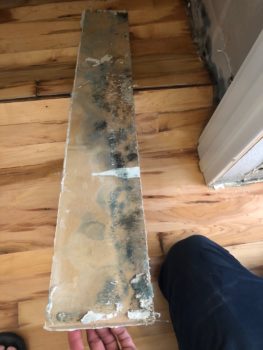
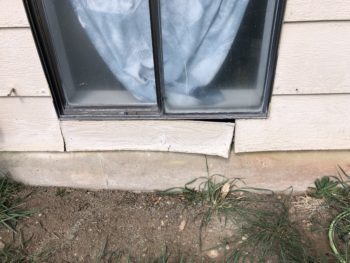


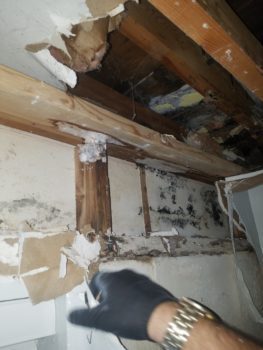
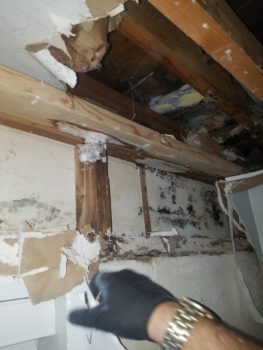

Contact Cathy at Whole Home & Body Health
Call: 970-485-5092
Email: cathy@wholehomeandbodyhealth.com
YouTube Channel: Whole Home and Body Health
Download: Top 10 Guide for Reducing EMF’s – Click Here!
Feeling overwhelmed with all this information?
Join her Environmental Illness & Sensitivity Group to get support.
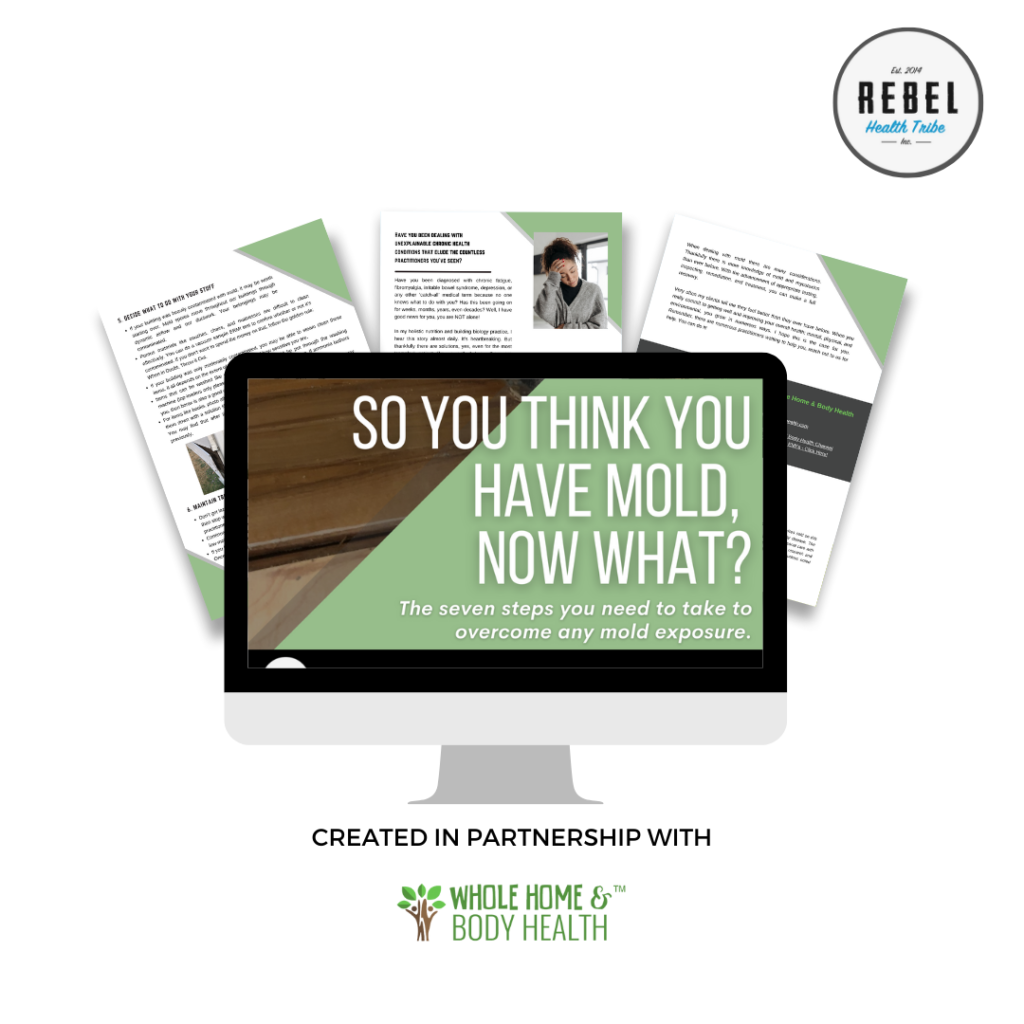
Sign Up & Receive the So You Think You Have Mold, Now What? PDF
Sign up with your name & email to receive the So You Think You Have Mold, Now What? PDF along with any future updates, content, and mold-related offers from RHT and Cathy Cooke!
Sign Up & Receive the So You Think You Have Mold, Now What? PDF
Sign up with your name & email to receive the So You Think You Have Mold, Now What? PDF along with any future updates, content, and mold-related offers from RHT & Cathy Cooke!

Toxicity & Detox Support Products
Get Social
Recent Podcasts
Recent Courses
Toxicity & Detoxification Masterclass 2024
The toxicity and Detoxification Masterclass covers a wide
Brain & Nervous System Masterclass 2024
19 Leading Experts Share Cutting-Edge Science, Effective Practices,
Autoimmune Masterclass 2024
Autoimmune Masterclass brings together 17 of the world’s
Toxicity & Detoxification Masterclass
The toxicity and Detoxification Masterclass covers a wide
Get the RHT Newsletter
Be the first to get access to special offers, new podcasts, courses, products and events from Rebel Health Tribe.
Facebook
Twitter
Pinterest
LinkedIn
Reddit
WhatsApp
Telegram
StumbleUpon

Genetics and Hormone Production, Transport, Utilization, and Metabolism
Our genetics play a larger role in our hormones than most people think. Obviously, diet, lifestyle, and environment are the

Genetics & Neurotransmitters: Impact on Your Mood, Energy, Hormones, and More!
Have you wondered why an antidepressant didn’t work for you? Have you ever wondered where your anxiety is coming from

Genetics and Detoxification: Your genes are key to knowing what detox protocol will best suit your body.
https://vimeo.com/821487331 If you’ve ever bought a detox kit off a shelf or felt considerably worse while doing a detox,

An Introduction to Functional Genomics: Know Your Genetics and Make Informed Personal Health Decisions
https://vimeo.com/821487068 The desire to know how your genes are affecting your health is rapidly growing. Many people are getting genetic
Cathy Cooke, BBEC, EMRS
Cathy Cooke is a Board Certified Holistic Nutritionist with the National Association of Nutrition Professionals. She uses a functional medicine approach to help people identify imbalances in the body. She is also a Certified Building Biology Environmental Consultant and Certified Electromagnetic Radiation Specialist with the Building Biology Institute. She
assesses buildings for anything that may be causing health problems, including Indoor Air Quality, mold, chemical off-gassing, ventilation, and EMF exposure. Combining Holistic Nutrition and Building Biology, she addresses both the body and environment to help her clients achieve optimal health. She is also the founder of Idahoans for Safe Technology, an advocacy and awareness group for the safer use of modern day communications. Originally from Kansas City, MO., she currently lives in Boise, ID.
View All Author Posts




